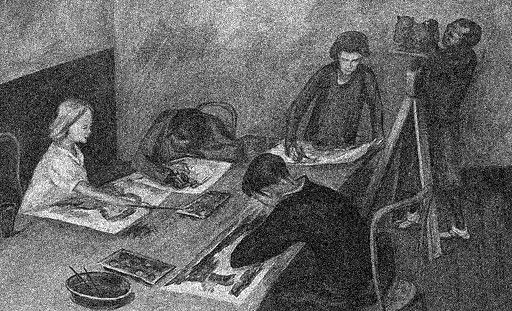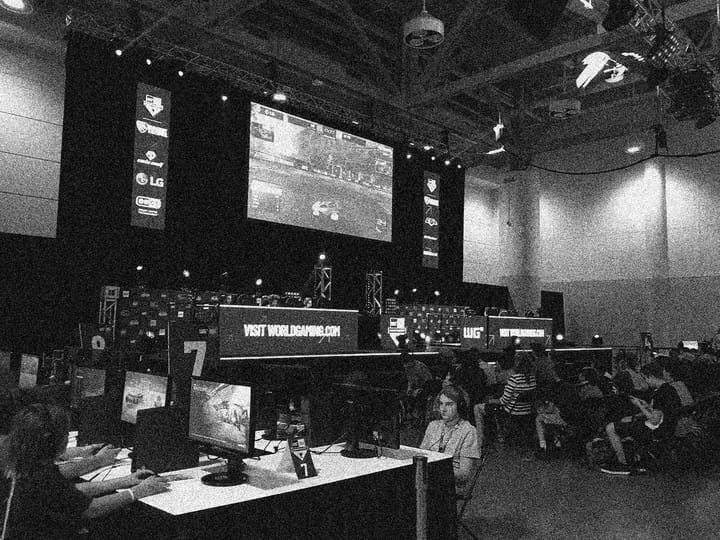Does It Matter That Contemporary Art Doesn't Tell Us About Society Anymore?
No, and that’s OK.

Review of Ben Davis, Art in the After-Culture: Capitalist Crisis and Cultural Strategy (Haymarket Books, 2022).
Alasdair MacIntyre’s After Virtue opens with a thought experiment: Imagine a world in which a series of cataclysms and a subsequent “know-nothing” political movement destroy scientific education and research. Decades later, a new movement revives the sciences. Partisans set dutifully to work with fragments of textbooks, lexicons of partial terminology, and pieces of procedural instructions.
Nobody, or almost nobody, realizes that what they are doing is not natural science in any proper sense at all. For everything that they do and say conforms to certain canons of consistency and coherence and those contexts which would be needed to make sense of what they are doing have been lost, perhaps irretrievably. (2)
Something similar is usually going on when words like “art,” “experience,” “creation,” “value,” and so on get used today. They are disconnected bits and pieces in a situation in which the common ground of art-experience is no longer there to give them significance.
Ben Davis’s new book Art in the After-Culture sets out to describe “context collapse” in art production and viewership. But instead of diagnosing the consequences of context collapse for our experience of art, the book settles for a description of social context or ethnography of art institutions and artists in a world where art-experience is no longer there to orient it.
Effective art criticism can repair our capacity for experience by restoring the continuity between the refined and intensified forms of experience that are works of art, and the everyday events, doings, and sufferings that constitute experience. Ben Davis’s detailed picture of the “after-culture” has been painted at the expense of saying anything critical, in this sense, about art.
Social Ciphers and Cultural Strategies
Art in the After-Culture collects a series of essays on art trends and the politics of cultural institutions that Davis wrote over the past decade for publications like ArtNet, where he is an editor. Davis ties the essays together through two overarching theoretical concerns:
The first is an attempt to theorize how inexorably intensifying pressures in the larger society have placed new types of demands on art and pushed into more and more anxious configurations.
The passage implies that (1) society places demands and pressures on art, so (2) art encodes or ciphers these conflicts in significant and unique ways, so that (3) art, deciphered by criticism, becomes a significant message about the political, social, and human world that produced it.
A contrasting perspective might ask about the demands that art places on us as a basic organizational and vital aspect of our experience. In this account the social significance of art would arise not from the ideologies of artists and the major cultural institutions that define contemporary art, but instead from the tension between a society that robs us of the opportunities for fulfilled experiences and art as a general demand or tendency that our experience seeks to productively fulfill.
This perspective is pretty close to Davis’s own in his earlier book, 9.5 Theses on Art and Politics. In the titular essay, Davis went beyond ethnography to the “double meaning” of art as both universal human impulse towards creativity and fulfillment in our actions and labors, on the one hand, and the institution, practices, and descriptions of self-described “artists” on the other hand:
6.1 Art in common parlance has a double meaning: It designates creative activity in general and represents work that circulates within the specific tradition and set of institutions of the visual arts; thus, something can be ‘art’ (that is, creative) but not be ‘Art’ (that is, not fit within the visual arts sphere), or something can be ‘Art’ (that is, can be easily classified within the sphere of the visual arts) but not be “art” (that is, not be particularly creative.)
Davis’s commitment in the earlier book to this account of art’s relation to experience also orients his political and social prescriptions around art in 9.5 Theses. Social and political reforms are the second overarching thematic concern of Art in the After-Culture:
The second is the argument for the need to think concretely about the role that the cultural sphere plays in either building or blocking the kinds of social movements needed to turn the tide.
In 9.5 Theses, Davis’s account of art-experience led to prescriptions for more public funding for arts education. Social reform for better education, better art, better lives and better experiences is based on the principle that “creative expression is a basic human need, and it should be treated as a right to which everyone is entitled.”
In Art and After-Culture, in contrast, Davis moves from this modest but realistic argument for the positive nexus of art and politics to a series of descriptions of “cultural strategies” to intervene in politics (digital activism, the democratization of art-access, anti-institutional movements), none of which he finds satisfying or convincing.
Ethnography of the After-Culture
Each stand-alone essay describes the cultural and political dynamics of a cultural trend in the 2010s and attempts by elucidating the dynamics to show the “dialectical complexity” of each phenomenon.
“Radical Chic and Elite Capture” explores the history of American art-world radicalism from the 60s to the present. Is radicalism in art an instance of “kettling,” the containment of radical ideas and energies into the harmless cultural sphere, so that economics and politics remain untouched? Yes and no, says Davis. Radicalism is certainly more significant and dangerous in economics and politics, but perhaps art provided a “conservation space” to preserve radicalism in a time of political and economic reaction. There is no right answer, Davis concludes after reflecting Tom Wolfe’s infamous savaging of elite flirtation with cultural radicalism in “Radical Chic”. Cultural focus deflects from the political struggle, but so too does criticism of the cultural focus.
We come away from the essay knowing the ideologies, documents, and players involved in the debate from the ‘60s to the present. But here again a basic theory of art-experience would take the essay from ethnography to criticism. The “preserve” argument for aesthetic radicalism is an old one, and a dominant theme in Max Horkheimer and Theodor Adorno’s defenses of aesthetic modernism. But in essays like Horkheimer’s “Art and Mass Culture,” what was preserved by art-experience was not radical ideas or ideologies, but the integrity and capacity for sane and coherent experience. Art, argues Horkheimer, is valuable because it preserves our capacity to integrate heightened intensities and contrasts in order to access the intrinsic value of experience, something threatened by mechanization in work and reification in culture. This version of the “preserve” argument is both more troubling and more convincing than Davis’s.
The chapter “From Art World to Cultural Network” is the biggest missed opportunity to investigate a pressing aesthetic issue in the contemporary environment: the impact of the changing media landscape on art and our experience of art. Davis collects valuable observations on changes in viewership practices, artistic interventions in temporality, institutional transformations by museums, and the soberingly frequent adoption of avant-garde counter-cultural movements as marketing schemes by major art institutions. His conceptualization of contemporary movements like “BIG FUN ART” and other social-media platform-based art movements once again captures the dialectical complexities that reveal these patently regressive movement as troubled offspring of radical demands in the 60s to democratize art and move away from cultural shibboleths like museums. But again the lack of a concept of art-experience blocks the investigation of the relationship between the effects of a pervasive social media and changes in the structure and capacity of our art-experience. Instead of critical investigations into pseudo-experience and dosing culture, we are whisked through a tour of ideologies and movements with a tepid conclusion: “The technological society that has made plausible the promise that everyone can be an artist but then transformed that into a new instrument of alienation is one ripening toward a crisis.”
Justifying the Contemporary
The premise animating the essays in Art in the After-Culture is that contemporary art, by definition, is a significant cipher of society and politics. We observe contemporary art because in it we see a force-field of different values struggling for symbolic supremacy.
But in the absence of any animating tension behind contemporary art, such as Davis outlined in his earlier “9.5 Theses” essay (where there is a basic urge for fulfilled, creative experience and activity, and a robust concept of art-experience in tension with a society that increasingly restricts such opportunities), it’s hard to see why we should have anything more than an ethnographic interest in contemporary art. In Art in the After Culture, art is just one more sociological “field” comprised of the institutions, practices, and discourses that self-identify around the term “art”. The “cipher” premise, and the claims that society makes formative “demands” on art, look suspiciously like a convenient intellectual justification for contemporary art.
The term “after-culture”, which Davis uses to describe our situation after the cultural upheavals and shifting media landscape of the 2010s, is a more suitable name for the situation in which the tension between art as general creative impulse in work and experience and art as socio-cultural field disappears. The most capacious definition of culture refers to our capacity for experience. In that sense, “After-culture” would make a precise label.
If the varieties of contemporary art profiled in Davis’s book leave us cold, and the critical justification for attending leave us unconvinced, it’s still true that the pressures and urges for fulfilled experience make demands on our lives. People still want to go to museums and learn to see and have experience with intrinsic value. If we abandon the premise that contemporary art by definition must cipher significant cultural conditions, the critical anxiety disappears. Those of us who want to experience art can still do so. Contemporary painters and other artists regularly produce works with the highest aesthetic pedigree, but their value comes from integrating heightened intensities and contrasts of creative experience, not from contemporaneity. Critics can nudge us along the path to see that. We can leave the ethnography of contemporary art to the journalists.
■
Harold Florida is a novelist in Hartford, CT. His first novel, Perfecte Ceremonie, was a finalist for the 2021 Greater Cincinnati’s Emerging American Novel of Note Award.



